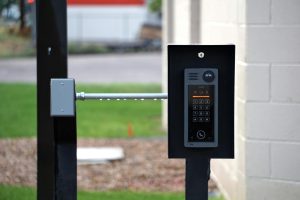Tax Credit Wars: States Battling for Green Construction Projects
The construction industry is no stranger to competition, but in recent years, a new battleground has emerged: the fight for green construction projects. With the growing awareness of environmental sustainability and the desire for eco-friendly buildings, many states are vying for a piece of the green construction pie. One of the key tools in this battle is the use of tax credits, and as the demand for green projects increases, so does the intensity of the tax credit wars between states. In this article, we will take an in-depth look at how tax credits have become a major factor in the competition between states for green construction projects.
The Rise of Green Construction Projects
In recent years, there has been a significant shift towards green construction projects, driven by both environmental concerns and financial incentives. With the increasing focus on sustainability and reducing carbon footprint, green building practices are becoming the norm rather than the exception. According to a report by Dodge Data and Analytics, the green building market is expected to reach $115.3 billion by 2021.
Not only do green buildings have a positive impact on the environment, but they also offer numerous benefits to the building owners and occupants. These benefits include lower energy costs, improved indoor air quality, and increased property value. With such attractive advantages, it’s no surprise that there is a high demand for green construction projects.
The Role of Tax Credits in Green Construction
Tax credits are incentives offered by the government to encourage businesses and individuals to invest in certain activities or industries. In the case of green construction projects, tax credits are used to promote the use of sustainable building practices and materials. These tax credits can significantly reduce the overall cost of the project, making it a more attractive investment opportunity for developers.
There are various types of tax credits available for green construction projects, such as federal tax credits and state tax credits. Federal tax credits, such as the Energy Efficient Commercial Buildings Tax Deduction, offer incentives for eco-friendly constructions that meet certain energy efficiency standards. On the other hand, state tax credits vary from state to state and can cover different aspects of a green project, such as using renewable energy sources or implementing green building practices.
The Tax Credit Wars between States
With the growing demand for green construction projects, many states are looking to capitalize on this trend and attract developers to their region. As a result, there is fierce competition between states to offer the most attractive tax credit programs for green projects. This competition has been dubbed as “Tax Credit Wars.”
States are constantly trying to one-up each other by offering more lucrative tax credits to entice developers. For example, in 2018, New Jersey announced a tax credit program for environmentally responsible buildings that offers incentives of up to $25 million. This move was seen as a response to neighboring states, such as New York and Connecticut, which had already established aggressive tax credit programs for green construction.
The Benefits and Challenges of Tax Credit Wars
While the competitiveness of tax credit wars may benefit developers by offering them better incentives, it also creates challenges for both developers and the states involved. On one hand, developers may be overwhelmed with the number of tax credit options available, making it difficult to choose the most suitable one. On the other hand, states may experience budget constraints due to offering significant tax credits, which can lead to changes in their tax credit programs in the future.
Moreover, tax credit wars can also lead to unfair advantages for certain regions, as some states may not have the financial resources to offer attractive tax credits, putting them at a disadvantage. This can result in a concentration of green projects in certain states, while others are left behind.
The Future of Tax Credits in Green Construction
As the competition between states for green construction projects continues to intensify, it is expected that tax credits will continue to play a significant role in this battle. However, there could be changes in the future that could affect the use of tax credits for green projects.
With the growing economic pressure to reduce government spending, there could be a push towards more standardized and limited tax credit programs for green construction. This could result in more collaboration between states to establish consistent regulations and guidelines when it comes to green projects.
Conclusion
The tax credit wars between states for green construction projects may be seen as a double-edged sword. While it encourages the growth and development of eco-friendly buildings, it also poses challenges and disadvantages for both developers and states. As the demand for green projects continues to rise, it is essential for states to strike a balance between offering attractive incentives and maintaining their financial stability. The key is for states to work together to promote sustainable practices and create a level playing field for all regions. Only then can we truly achieve a greener future for the construction industry.










